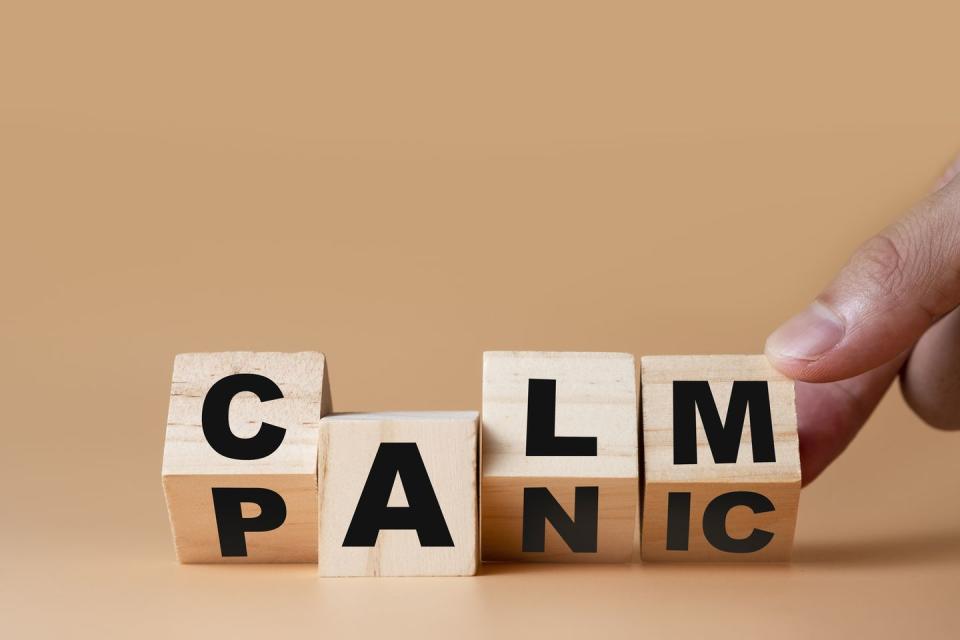My PTSD Stalks Me Still. Yet I’ve Found a Way to Reset.
THE VISIONS OF violence come without prompts I can anticipate or perceive, typically in moments of tranquility and rest.
I’ll be dozing off near a wood stove on a chilly night, perhaps with my dog at my feet. Or I’ll be reclined in bed with a book under a summer moon, in the last moments before sleep, put to ease by the whir of a window fan.
Then it will happen—any of a trio of recurring visual phenomena that clinicians call hypnagogic hallucinations. In one, a hand holding a brick or a grapefruit-sized stone slams down on my face. I almost feel the crunch. In another, a sharp ax strikes the back of my neck. It passes clean through. In the third, I am pelted by a stone that strikes the side of my head. I sense an angry mob closing in.
Each vision is but a flash, over as soon as it begins. The effects endure. First I jolt to alertness, flushed by the chemistry of fear. My heart rate will soar, my breathing will quicken, and my muscles will tighten and twitch as if ready for a decisive act—a sprint for safety or a lunge into a fight. I will have passed from near sleep to full arousal in a blink.

Then comes the climb-down. In many ways I am lucky. When the hallucinations jump-start my body into high RPM, I disassociate from my surroundings only briefly. Though I feel an instant of pain at the imagined impact of stone or blade, my lurch into overdrive is quickly followed by an awareness that there is no such threat.
My mind senses, then assesses, reality. I realize I am in bed or on a chair in a quiet room. I am not bleeding, not wounded, not dead. There is no assailant, no menacing crowd, no pressure to decide whether to fight back or escape. I take over and override whatever has overridden me.
Dreaming again, I’ll mutter, with a choice word or two added, and go meta, coaching myself to process my unwanted surge. I’ll rise to pace rooms in the dark, sometimes stopping to lean against a bathroom sink and look in the mirror, confirming that I have suffered no physical harm beyond that I might be haggard with insomnia. I’ll pour and drink a glass of tap water. I might engage in a breathing exercise. Soon my heart rate settles. With time I reclaim a sense of sanctuary and calm. Then, if mind and body will agree, I try returning to rest.
THERAPY HAS TAUGHT me that my hallucinations are associated with PTSD, that complex ailment for which I am supposedly primed by a life around organized violence, terrorism, and war, as well as by volatility in personal and professional relationships. Put simply, this is a condition picked up in the provinces of conflict and fear.

I am a former Marine, was present at the attacks on the World Trade Center in 2001. I spent years alongside combatants in multiple wars, and survived near misses in many ambushes, and once, an air strike.
For years I mastered the expressionless face and channeled whatever happened into preparing for, and learning how to survive, the next bad event, into which I willingly headed. My work required proximity to extraordinary violence and the abuse of power, along with association with unsavory people and a boss or two who, in hindsight, were not qualified to lead.
The history matters to me now, because after being exposed to many years of trauma and dread, with incidents beyond counting, and concurrently suffering disillusionment with authority and betrayal by a senior manager, I have learned to hesitate when pinpointing the sources of my malady.
I am, however, familiar with its manifestations, which are a bundle of reactions to fears I once suppressed: a penchant for readiness and preparation, an urge to avoid crowds and the danger they may pose, a susceptibility to startling, and almost an overpowering activation when my mind perceives danger.
The threats can be real or, as with the hallucinations, imagined. Either way, my symptoms are bathed in fear, an irrefutably necessary sensation (fear informs actions and judgments that are essential to our survival) that now runs amok. It feels as if fear reactions, which can be lifesavers, are stored in the brain, ready to be released viscerally and automatically when tripped.
The grab bag of reactions and behaviors in my case are not atypical. In The Evil Hours: A Biography of Post-Traumatic Stress Disorder, the author David J. Morris, a former infantry Marine officer and reporter in occupied Iraq, embraced the confusing elements of life after trauma.
“PTSD, as it is understood today,” he wrote, “is a very heterogeneous disease, essentially a junk drawer of disconnected symptoms, which include a numbing of the emotions, hyper-vigilance, social isolation, and a variety of intrusive manifestations, such as nightmares or hallucinations.”
Molly Boehm, a licensed clinical social worker in Washington, D.C., who formerly worked with wounded service members at Walter Reed National Military Medical Center, tells clients suffering from PTSD that it is as if mind and body, once exposed to a stressful enough trauma, keep returning to a primitive mode.
“When I am explaining the concept, I tell them they are almost in a time machine and brought back to that moment of past trauma,” she says. “It’s like you are seeing a saber-toothed tiger in your living room, and perceive a threat to your health, safety, and well-being.”
What I describe as a “fear chemistry” that sometimes floods me Boehm interprets as “adrenaline, cortisol, and other reactions we don’t even fully understand yet, such as the inflammatory response.”
PUBLIC PERCEPTION OFTEN associates PTSD with veterans of war. On one level, attention on the relationship of combat and PTSD has value, as young combatants, like young athletes, can be prone to a sense of invincibility, and the male-dominated ethos of martial culture can discourage veterans from admitting to pain and seeking help.

Public attention can reduce stigma. But on another level, the association of PTSD with veterans can be a disservice, as it risks occluding trauma’s effects on an immeasurably larger cross-section of people, including refugees, victims of sexual violence and abusive relationships, survivors of workplace or vehicular accidents or any number of other frightening experiences, like natural disasters, fires, bullying, or stalking.
Almost anyone around us can quietly be suffering from PTSD, and their triggers for a full-blown reaction might seem harmless or small: a slightly raised voice, an accidentally slammed door, a car horn, the onset of night.
One time, the image that sent me into high RPM was the bottom of a broken bottle discarded in a salt pond. I was walking on exposed muck at low tide, harvesting clams on a winter afternoon, scratching mud with a stainless-steel rake.
When I glimpsed the circular object on the bottom in my peripheral vision, my mind mistook it for a PMN land mine, a common weapon in Afghanistan that had claimed the legs of a friend, something I had spent years scanning for as I walked.
My mind leaped into its heightened state. I was awash in emotions with my fear neuro-circuitry fully activated. Heart pounding, lungs swelling, my quadriceps and back muscles rippling for action, I froze.
Then I reassessed. There’s no land mine here, I told myself, staring at the little disk until it assumed its harmless shape.
To anyone watching from shore, I must have been an odd sight—harvesting one moment, statue-still the next. I was aware of this as I reset myself, and did not care. I was trying to return to the moment, and get on with my life as I know it can be.
This article originally appeared in the January/February 2021 issue of Men's Health.
You Might Also Like

